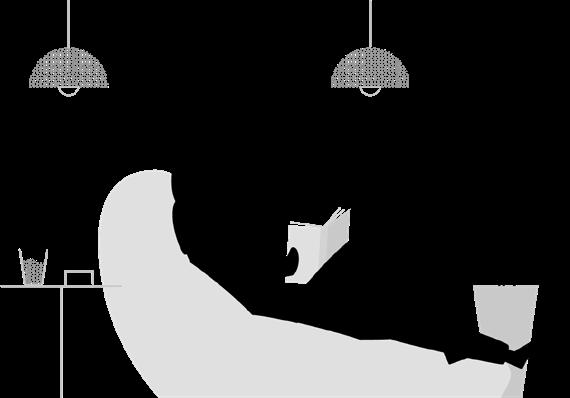FEATURE
Lip service: A meeting with Melissa Lucashenko Melissa Lucashenko enjoyed a stellar 2019 on the back of her latest novel, Too Much Lip. Here, local writer Rebecca Ryall reflects on a profound recent meeting with the author.
I meet with Melissa Lucashenko on a spring afternoon in the plaza at Southern Cross University’s (SCU) Lismore campus. It’s late afternoon and the plaza is nearly deserted, which is perfect for me. It’s not our first meeting – I attended a workshop she facilitated for writing students at SCU a few days earlier. And I had glimpsed her at Byron Writers Festival the month before. On that occasion, she had impressed me for the most mundane of reasons. When she took her seat in the audience (of a panel discussion involving women writers of colour) I was a little in awe of the literary legend in front, until, that is, I saw she was wearing tracksuit pants. Mundane, yes, but symbolic, in my view, of someone very down-to-earth and lacking pretence. This interview is for a student publication, but we also discuss my research interests, which include connection to Country. She recommends the work of Tasmanian Indigenous artist Julie Gough. Examining Julie’s work, I see more clearly what Melissa is doing with her writing. Like Gough, Melissa explores alternative narratives, re-centring the Indigenous experience and giving it back. She tells me that she writes her novels with multiple layers. ‘I aim to write books that any reasonably literate person can read and enjoy; at the same time, I aim to write literary fiction,’ she says. ‘Too Much Lip can be read just as an adventurous yarn; reading it from a literary perspective reveals the subtext and reading as a blackfella reveals a whole other set of subtexts.’ This has been my observation of her work. In an early 20 | AUTUMN 2020 northerly
scene in the book, local Bundjalung elders are called upon to conduct a ceremonial smoking by a young (non-Indigenous) couple, being kept awake by an (apparent) disgruntled former Indigenous custodian. The obliging Uncles arrive, conduct a suitably solemn and baffling ceremony before departing, chuckling over the gullible whitefellas, insomniac due to the termites slowly consuming the house around them. As a whitefella engaging with Indigenous ontology, I return to this scene regularly, lying wakeful in my own termiteridden house in the sticks. Melissa is planning her own move to the bush soon, but has much to say besides, about connection to Country being just as important in the built environment as the ‘wild’. ‘Everything has a Dreaming and the built environment tells its own story, of who made it, who uses it,’ she tells me. I am reminded that the paving stones under my feet are part of the landscape that is Country, as much a historical text as a Reynolds. Melissa was born and raised in Logan, south of Brisbane, and it is to Brisbane she returns for her current work. She expects she will spend the next three years or more of her life immersed in the chaotic world of colonial Brisbane. This is her PhD thesis, and the scholarship she was awarded to complete it will allow her to fully focus on the work, as well as plan her upcoming move back to Bundjalung Country in northern NSW. Her first foray into fiction was driven by boredom with her public policy thesis, but also the lack of Indigenous










